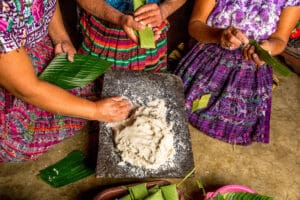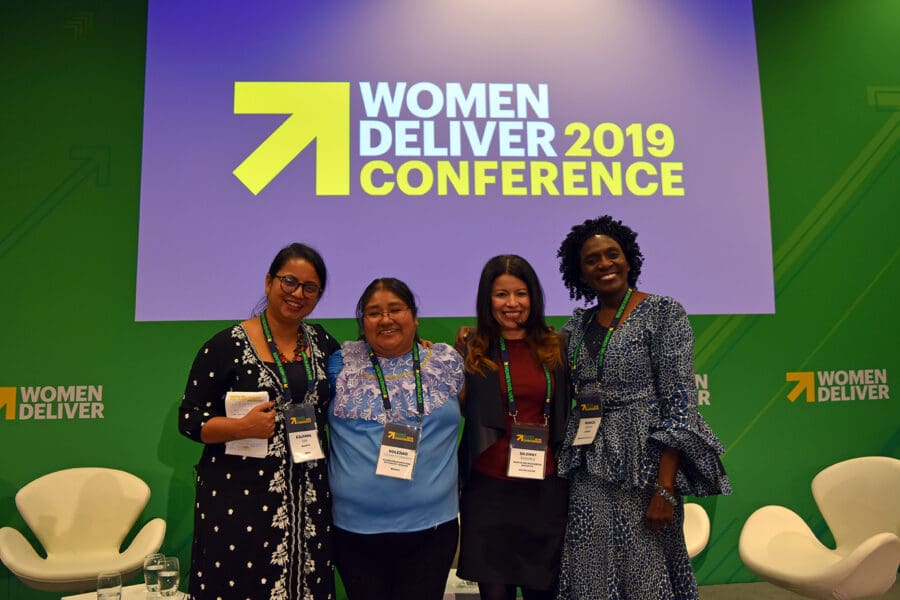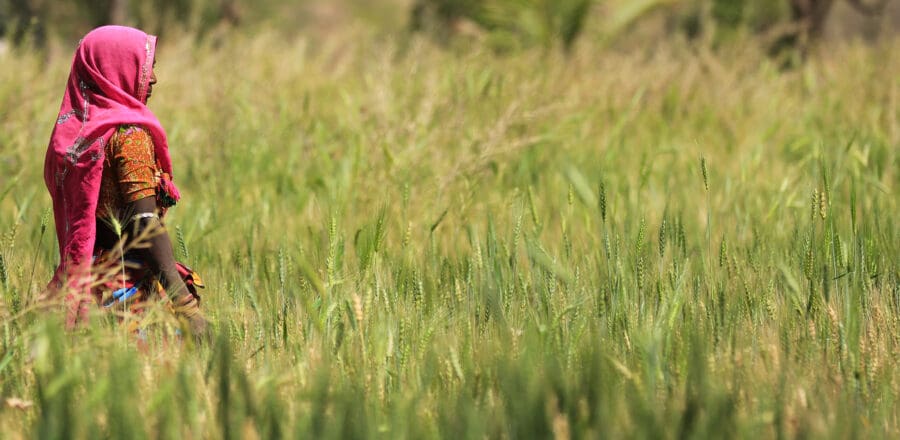There is no political empowerment without economic empowerment. That was the principle behind a 2019 strategy by RRI’s Latin America coalition to analyze economic systems based on communities’ own concepts of development within their collective tenure systems.
The analysis aimed to understand how these systems can strengthen the territorial rights of Indigenous Peoples, local communities and Afro-descendants – particularly focusing on the women within these groups.
The first phase of the analysis aimed at understanding women’s contributions to their own economies and collective enterprises led by women belonging to ethnic or community groups, a subject that has historically been neglected at both national and international levels. The analysis was designed in two stages: the first consisted of a regional mapping of communities’ economic initiatives and ventures led by women in eight countries. The second involved an in-depth study of the enabling conditions and impacts of these systems on women and their communities.
Mapping and Classification
The preliminary analysis mapped 89 initiatives across 8 Latin American countries: Brazil (10), Colombia (10), Ecuador (12), Guatemala (13), Honduras (10), Mexico (13), Panama (9) and Peru (12). From this sample, we drew the following findings.
- 68.5% of the enterprises were led by Indigenous women, 18% by Afro-descendant women, 9% by women from local communities, and 4.5% by women from two or more groups.
- Indigenous, Afro-descendant and local community women were found to contribute to their local or territorial economies through a wide range of types of enterprises. These were classified as: natural and processed products, gastronomy, tourism, handicrafts, cultural services, and health and social services. Many initiatives belong to two or more types of enterprises.
- The predominant sector is artisanal handicraft production, either as a primary or complementary activity. Within handicrafts, the textile subsector was often linked to tourism.
- About 70% of all handicraft enterprises were very specialized, continuing a thousand-year-old tradition that’s still preserved outside communal territories. Examples included weavers, furriers or ceramists. In Lake Atitlán, Guatemala, Mayan weavers demonstrated the processes for obtaining, dyeing and weaving wool, linking the ancient activity to their culture and spiritual healing processes.
- Of natural and processed products, 77% belonged to the food subsector, which ranged from cultivation of staple foods to production of derivative products such as casabe (a bread made from cassava flour), canned fruits, aromatic herbs for infusions and others. This sector is frequently associated with tourism.
We also noted interesting differences between the Mesoamerican and South American regions. In Mesoamerica, social and cultural sector enterprises were more frequent, indicating a greater participation by women in fields typically dominated by men, such as music, media, finance and legal defense. Women’s organizations in Mesoamerica have led legal actions to defend Indigenous ownership of textile designs, and have challenged the stigma facing married women who perform on the stage, form musical groups, run rural savings organizations, or anchor radio and news programs in their own languages.
Enabling factors for women’s enterprises
During a review of secondary sources such as the social media of women’s enterprises as well as research and news reports on this subject, we identified key trends and ideas to serve as the basis for the second stage of this analysis. We found, for example, that circumstances and sociocultural context are key to understanding why women become entrepreneurs. Economic necessity stands out, particularly in a context of social events such as migration, armed conflicts, and territorial dispossession, which have led to poverty, illiteracy, and poor health in these communities.
We also identified a search for economic independence to confront misogyny, gender discrimination, marginalization and violence against women. Some ventures rose from a need to preserve and share their communities’ culture and identity, and others began as resistance to external pressures on community territories: invasions, land expropriation, environmental damage and exploitation of shared resources.
Aesthetics emerged as a key vehicle for empowerment among the Afro-descendants. Through the turban, hairstyle and hair, the black woman strengthens her self-esteem, connects with her roots, and teaches her children to embrace their identity. This also links the sale of cosmetic products and accessories with expressing black identity. In Colombia, the Mata e’ Pelo women provide an example of this form of expression.
We found that despite being away from their territories, communities’ social values and solidarity remained strong. Migrant women formed associations, organizing themselves by recognizing their shared roots and customs. These associations have supported members against violence, discrimination or isolation through legal advice, economic training, and by maintaining age-old traditions through handicrafts, food and events.
The analysis also notes examples of women’s cooperatives, such as those in Ecuador, formed to ensure women could have effective and equal political participation as well as access to direct remuneration. This gave women a voice in decisions regarding their territories and resources. With similar motives, financial funds were created to grant facilities only to women. It’s important to note that studies have found better health and education rates in children in communities where women are the ones in charge of distributing the household income.
In other cases, women’s enterprises resulted from alliances formed to preserve their culture and traditions. This was the case for midwives in Brazil, who reinvented themselves at a time when ethnic women were denied their right to intercultural health systems because the Government had placed restrictions on the practice of midwifery, and going to a health center implied a higher probability of a cesarean delivery. The midwives formed an association in order to be trained in government-mandated health guidelines and becoming allies of authorized health entities.
Alliances also serve to open potential markets. In many cases, maintaining ancestral production techniques has resulted in higher prices for products, with alliances and certifications giving these businesses access to more specialized markets. During the Covid-19 pandemic, many enterprises also teamed up to sell online, as seen in the case of the online shop Rurak Maki in Peru, which sells handmade and Indigenous Peruvian handicrafts and folk art.
In the Garífuna culture in Mesoamerica, where communities have faced social, migratory and territorial dispossession, the analysis identified that music, dance and food were used as a way of keeping the communities’ culture alive wherever they were. Such was the case of casabe and other edible products by the Garifuna, which are industrialized and exported to markets as competitive as the United States. In music, women are seen reviving songs based on the history of their peoples and their daily lives, performed at festivals and accompanied by dances.
While the second stage of the analysis is in progress, the full results of the first stage can be seen here.
For more information, please contact Alejandra Zamora at [email protected] and Omaira Bolaños at [email protected].







